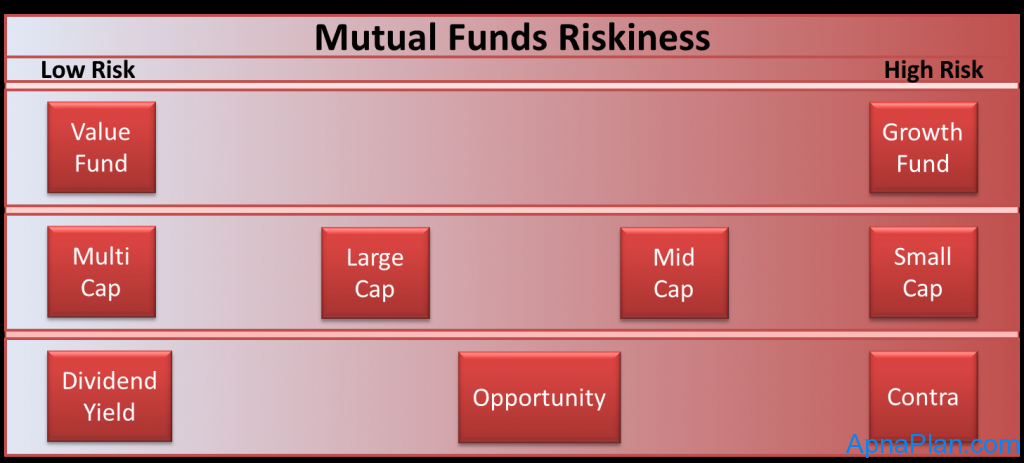Whats in the name! said Shakespeare… but we differ here. Mutual fund names can tell you a lot more. The names tell you the broad strategy is the fund is going to follow for investment. This helps them differentiate from the plain vanilla equity mutual fund schemes.
Growth Funds:
This is the most common fund and most schemes follow this. This strategy means that fund managers would be inclined to invest in companies which are in an expansion phase and they are not expected to pay dividends. Investing in growth funds requires a tolerance for risk and a holding period with a time horizon of five to 10 years.
Value Funds:
The fund managers mainly invest in stocks which are undervalued and have the potential to deliver superior risk-adjusted return in the long term. They invest in stocks which are trading at deflated price due to market exaggeration and exhibit characteristics such as lower than-average price-to-book, price-to-earnings ratios or high dividend yields.
Growth style of investing is considered to be more aggressive than value investing and can generate superior returns during healthy economic environment. Under growth style, since fund managers invest in stocks at higher valuations, a setback in the company or below par earnings could impact the stock price considerably. Growth style is better suited to aggressive investors while the value style is better suited to conservative investors.
Opportunities Funds:
These funds seek to invest in companies which arise from the changing economy, various economic reforms and from those sectors that drive the economy. It can also look out for opportunities like merger, acquisition or de-listing. Like the ‘growth’ funds, these funds are meant for investors looking to generate superior returns with higher risks.
Contra Funds:
As the name suggests the fund managers seeks to invest in companies which are out of favour right now but are placed to outperform in times to come. So ideally these funds portfolio should consist of companies which are under performing the current market right now. Investors need to be cautioned that this category is riskier than the conventional diversified funds.
Dividend Yield Funds:
As the name suggests these are funds whose portfolio consists of companies giving high dividend yield. These funds are expected to safeguard wealth in a falling or bearish market and hence better suited to risk-averse investors.
Multi-cap or Flexi-cap Funds:
Listed companies can be classified in large cap, mid cap, small cap or micro cap depending on market capitalization. For all those who don’t know market capitalization (Market Cap as it is popularly referred to) is product total shares available for trading by its present price.
As the name suggests multi cap or flexi cap means the fund manager can choose to invest in companies across the market cap horizon. Though a few do indicate their allocation to large, mid and small cap stocks, mostly they are indistinguishable from a regular diversified fund.
Large Cap Funds:
These funds invest in companies which are generally in top 50 by market capitalization. So this resembles stocks closely in Sensex or Nifty.
Mid Cap Funds:
These funds would invest in companies which are next to large caps. So it might be companies in BSE 100 or NIFTY Midcap Index. These are riskier than Large cap funds but might be suited to generate superior returns in the long run.
Small Cap / Micro Caps Funds:
These funds invest in companies which are small as per the market cap. These are riskiest of the lot and also more rewarding.
So, which Mutual Fund is the best?
Again as most questions in personal finance and investing the best mutual fund is the one which suits you, your goals and your investment style. What you need to know is the risk associated and the returns expected.
The other thing to note is though the funds have different names and should ideally have a different set of companies in their portfolio the fact is most of funds invest in limited set of companies. This is unfortunate and so don’t go only on name. You also need to look at their present portfolio to see if the fund is true to its name.
Two other things stand out. One, irrespective of the style, individual fund manager’s skills are important. Two, certain market conditions favour work in favour of certain styles. For example, value and dividend yield funds generally are better at protecting capital erosion in bear markets.


Nice way of classifying mutual funds. thanks
Thanks for reading and glad you like it 🙂